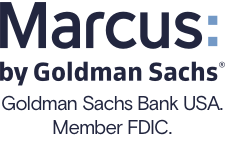What Is the Federal Funds Rate?

Many, or all, of the products featured on this page are from our advertising partners who compensate us when you take certain actions on our website or click to take an action on their website. However, this does not influence our evaluations. Our opinions are our own. Here is a list of our partners and here's how we make money.
The current Fed rate is 5.25% to 5.50%. That’s according to the Federal Open Market Committee (FOMC), the monetary policymaking part of the Federal Reserve that holds eight scheduled meetings a year to set the federal funds rate.
What is the Fed funds rate?
The federal funds rate, or Fed rate, is the interest rate that U.S. banks pay one another to borrow or loan money overnight. It also affects interest rates on everyday consumer products, such as credit cards or mortgages.
Since banks hold reserves to conduct everyday business such as having enough liquidity and clearing payments, banks that need more reserves often borrow money from other banks.
When is the next Fed meeting?
Who sets the Federal funds rate?
The Federal Open Market Committee sets the federal funds rate. The FOMC sets the target rate range, and sets the Fed rate to be aligned with that target range.
What is the current Fed interest rate?
Right now, the Fed interest rate is 5.25% to 5.50%. The FOMC established that rate in late July 2023. At its most recent meeting in June, the committee decided to leave the rate unchanged.
Here are the most recent Fed rates from FOMC meetings:
FOMC meeting dates | Rate change | Fed rate (as a target range) |
|---|---|---|
June 11-12, 2024. | None. | 5.25% - 5.50%. |
April 30-May 1, 2024. | None. | 5.25% - 5.50%. |
March 19-20, 2024. | None. | 5.25% - 5.50%. |
Jan. 30-31, 2024. | None. | 5.25% - 5.50%. |
» RELATED: Learn what basis points are
After sitting at 0% for two years during the coronavirus pandemic, the rate steadily climbed starting in March 2022, as the Federal Reserve aimed to combat inflation. But the climb has slowed down. The Fed has paused rate hikes six times since July 2023.
» MORE: Understand how raising interest rates helps inflation
The FOMC meets next on July 30-31, 2024.
What happens when the Fed raises interest rates?
First, some context on Fed rate hikes. The Federal Reserve raises the federal funds rate to curb inflation. When it increases the Fed rate, banks pay more to borrow money from one another. When the federal funds rate rises, it doesn’t just affect banks sending and receiving money. Those banks pass on that expense to customers by charging higher interest rates on products like credit cards and mortgages. The idea is that by increasing the cost of credit, demand for goods and services will fall, causing their prices to subsequently fall, too.
Here’s why that happens: The Federal Reserve can change only the federal funds rate. But since that rate is tied to other rates and variables, those changes have wide-reaching effects. When the Fed rate goes up, it’s more expensive for banks to borrow money. So it gets more expensive for consumers to borrow money, too. Anything tied to financing, including credit cards, car payments, student loans or mortgages, can get pricier.
On the other hand, a rising rate can lead to higher yields for savers and better rates for CD investors in some bank accounts.
» MORE: See our CD rates forecast
What happens when the Fed lowers interest rates?
When the Federal reserve lowers the federal funds rate, banks pay less to borrow money from one another. Banks, in turn, lower interest rates on loans (including mortgages) and credit cards, lowering the cost of borrowing money to buy cars, homes and other big purchases. The stock market is likely to be affected by a lower Fed rate hike, with stock prices growing. All of these factors are intended to induce economic growth. With borrowing costs lowered, consumers have incentive to spend and invest more.
Unfortunately, lower interest rates at banks due to a lower Fed rate means that deposit account interest rates will fall, too. So annual percentage yields on deposit products such as CDs, savings and interest-bearing checking accounts will decline as well.
The Federal reserve paused on changes to the federal funds rate starting in July 2023, keeping rates steady for nearly a year. As such, bank interest rates generally remained flat starting in September 2023 until 2024 when interest rates began to fall. Banks started lowering rates on deposit accounts such as savings and certificates of deposit in anticipation of the Fed rate being lowered, but that has yet to come.
» Are rates going up or down? Check out NerdWallet’s savings forecast

Member FDIC
SoFi Checking and Savings

4.60%
$0

Member FDIC
EverBank Performance℠ Savings

5.05%
$0

Member FDIC
Barclays Tiered Savings Account

4.80%
$250,000
How does the Fed raise interest rates?
The Federal Open Market Committee, a 12-member group of banking leaders from around the country, sets the federal funds rate and much of the Federal Reserve’s monetary policy. It meets eight times a year and sometimes makes rate changes — including increases or decreases — outside its scheduled meetings.
Here's the FOMC meeting schedule in 2024:
Jan. 30-31.
March 19-20.
April 30 - May 1.
June 11-12.
July 30-31.
Sept. 17-18.
Nov. 6-7.
Dec. 17-18.
What is the Federal Reserve Board?
The Federal Reserve Board is the umbrella agency that governs the Federal Reserve System. It comprises three groups: the 12 Federal Reserve Banks in the U.S., the Board of Governors and the Federal Open Market Committee.
The Federal Reserve Board is responsible for the Federal Reserve achieving its three Congressional mandates: maintaining maximum employment, steady prices on goods and services, and moderate interest rates throughout the country.









